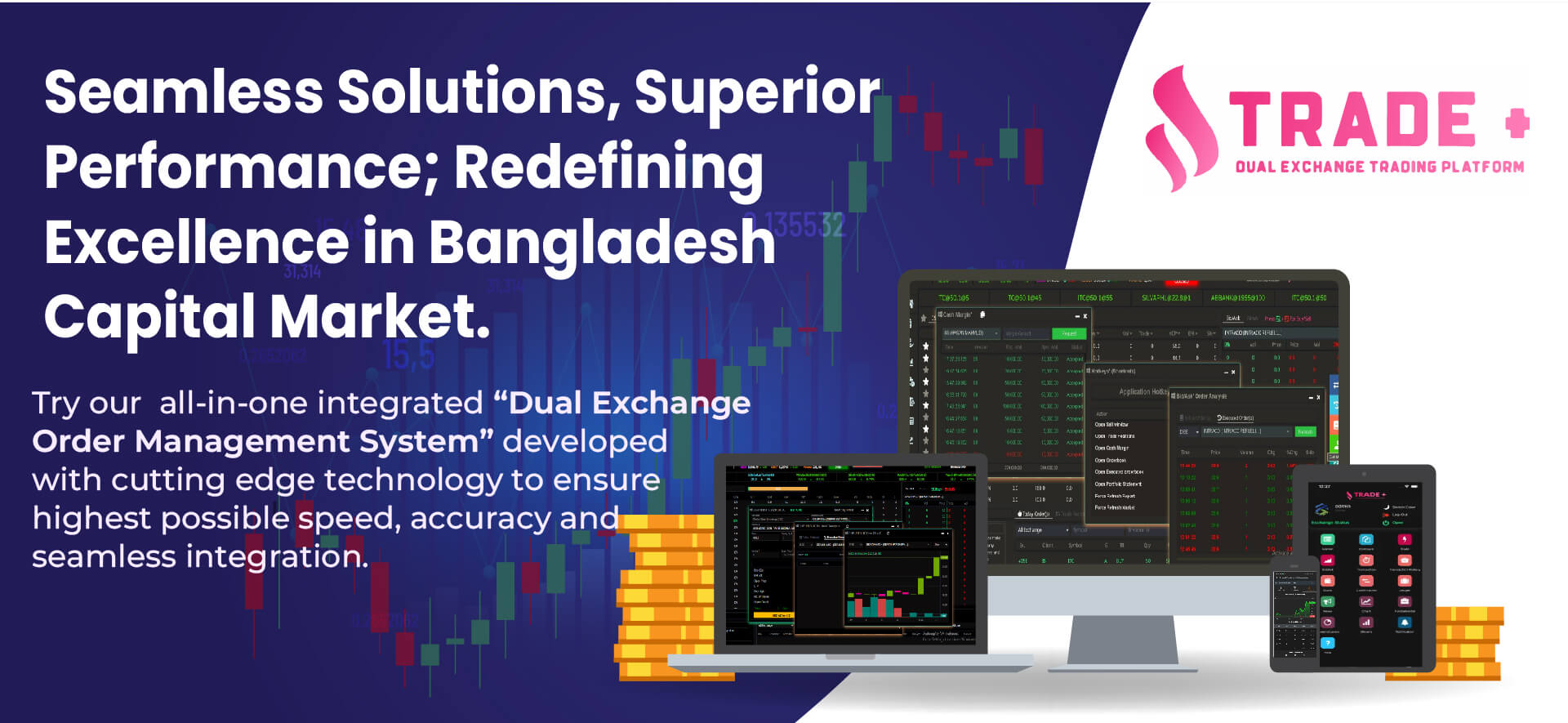
Our Stock Market Order Management System (OMS) tailored to efficiently and accurately facilitate the execution and management of orders placed within the stock market. We designed the system by keeping in mind that it can act as most reliable serves backbone system of brokerage firms, investment banks, and other financial institutions involved in trading securities. Let's explore the key features of our Dual/Single Broker Order Management System:
-
Stop-Loss: A stop-loss algorithm, often referred to as a Stop-Loss order or simply a stop order, is a key component of automated trading strategies used in financial markets. This algorithm is designed to protect traders from significant losses by automatically executing a sell order when the market price of a security reaches a predetermined level.
-
Take-Profit: A profit-taking algorithm, also known as a Take-Profit order or target price order, is a mechanism used by traders to automatically sell a security when it reaches a predetermined profit level. This algorithm is designed to lock in gains and capitalize on favorable price movements in financial markets.
-
Best Price: A best-price algorithm is a trading algorithm designed to execute orders at the most favorable price available in the market. This type of algorithm seeks to optimize trade execution by obtaining the best possible price while considering factors such as liquidity, market depth, and price volatility.
-
Advance Orders: "Advance orders" typically refer to orders placed by traders in advance of market movements or specific conditions. These orders are executed automatically when certain predefined criteria are met, without requiring manual intervention from the trader. Advance orders are commonly used in algorithmic trading strategies to capitalize on anticipated market movements, manage risk, and streamline the trading process.
-
Order Entry: Allow traders and investors to submit, modify, or cancel orders for buying or selling securities across various exchanges and trading venues.
-
Order Routing: Determine the optimal route for executing orders based on factors such as price, liquidity, speed, and regulatory requirements. This involves selecting the appropriate trading venue or exchange to achieve the best possible execution outcome.
-
Order Execution: Execute orders in real-time or based on predefined parameters, aiming to minimize market impact and achieve the best possible price for clients.
-
Order Management: Track and monitor the status of orders throughout their lifecycle, from submission to execution or cancellation. This includes managing order queues, handling order rejections, and providing real-time updates to traders and clients.
-
Risk Management: Implement risk controls and compliance checks to ensure that orders comply with regulatory requirements and internal risk limits. This involves monitoring for potential market manipulation, erroneous trades, and unauthorized activities.
-
Portfolio Management: Integrate with portfolio management systems to provide traders and portfolio managers with a consolidated view of their positions, orders, and performance metrics.
-
Reporting and Analytics: Generate reports and analytics to assess trading performance, monitor order flow, and identify opportunities for optimization or improvement. This includes tracking order fill rates, execution costs, and other key performance indicators.
-
Scalability and Reliability: Provide a scalable and reliable infrastructure capable of handling high volumes of orders and market data with minimal latency. This involves leveraging advanced technology such as low-latency trading platforms, high-speed connectivity, and redundant systems to ensure uninterrupted operation.
Overall, the purpose of a Stock Market Order Management System is to streamline the trading process, enhance execution efficiency, mitigate risks, and optimize trading outcomes for both traders and clients in the dynamic and competitive landscape of the stock market.
Our Newsletter
Subscribe to our newsletter to get regular update.


